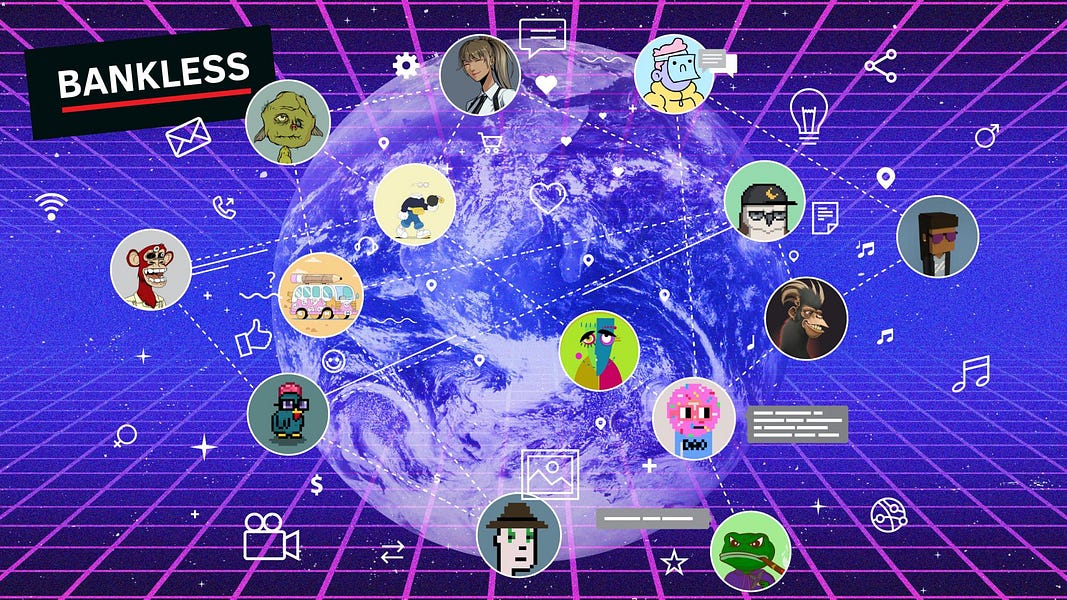Do you work for a DAO? Get affordable, premium healthcare by signing up with Opolis.
Dear Bankless nation,
Regardless of your thoughts on Elon Musk’s takeover of Twitter, it’s clear that it’s still not much of a decentralized experience. Twitter’s users and creators have always been along for the ride, and it would take a fundamental change to the platform’s structure to change that.
Web3 social is examining how such fundamental shifts towards social open protocols could solve some of the biggest problems in modern social media.
This week, we dive into some of the major players and unpack what make these solutions unique.
– Bankless team
P.S. Mint for Bankless Collectibles Episode #3 goes live tomorrow! 12pm EST for all Bankless DAO and Bankless Badge holders. Don’t miss it.
Modular blockchains are the future. L2s alone won’t solve the scaling problem; for this, we need to move toward a modular architecture. Fuel is the fastest execution layer for the modular blockchain stack, enabling maximum security and the highest flexible throughput.

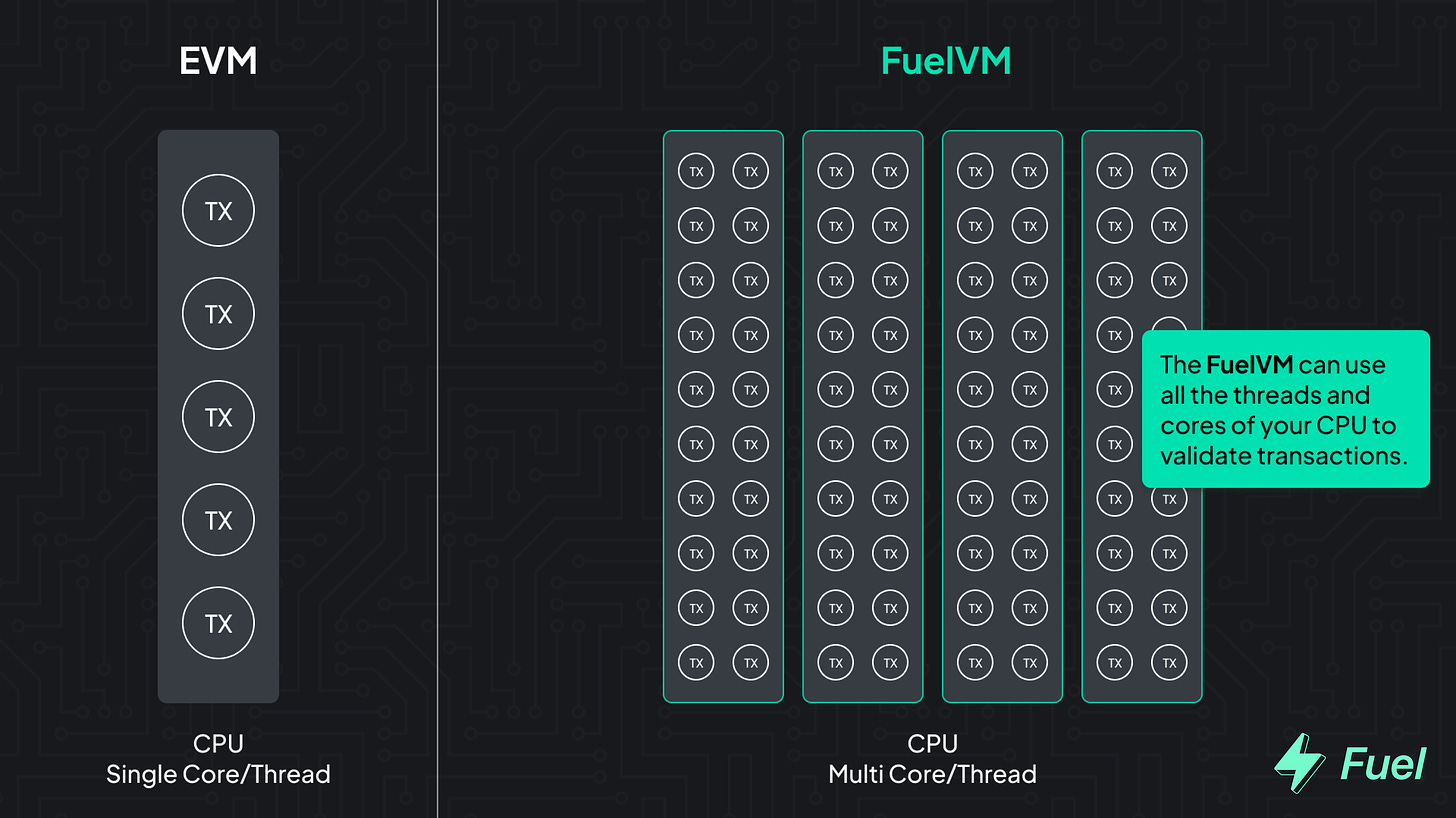
Bankless Writer: Donovan Choy, Bankless Editor & Co-author of Liberalism Unveiled
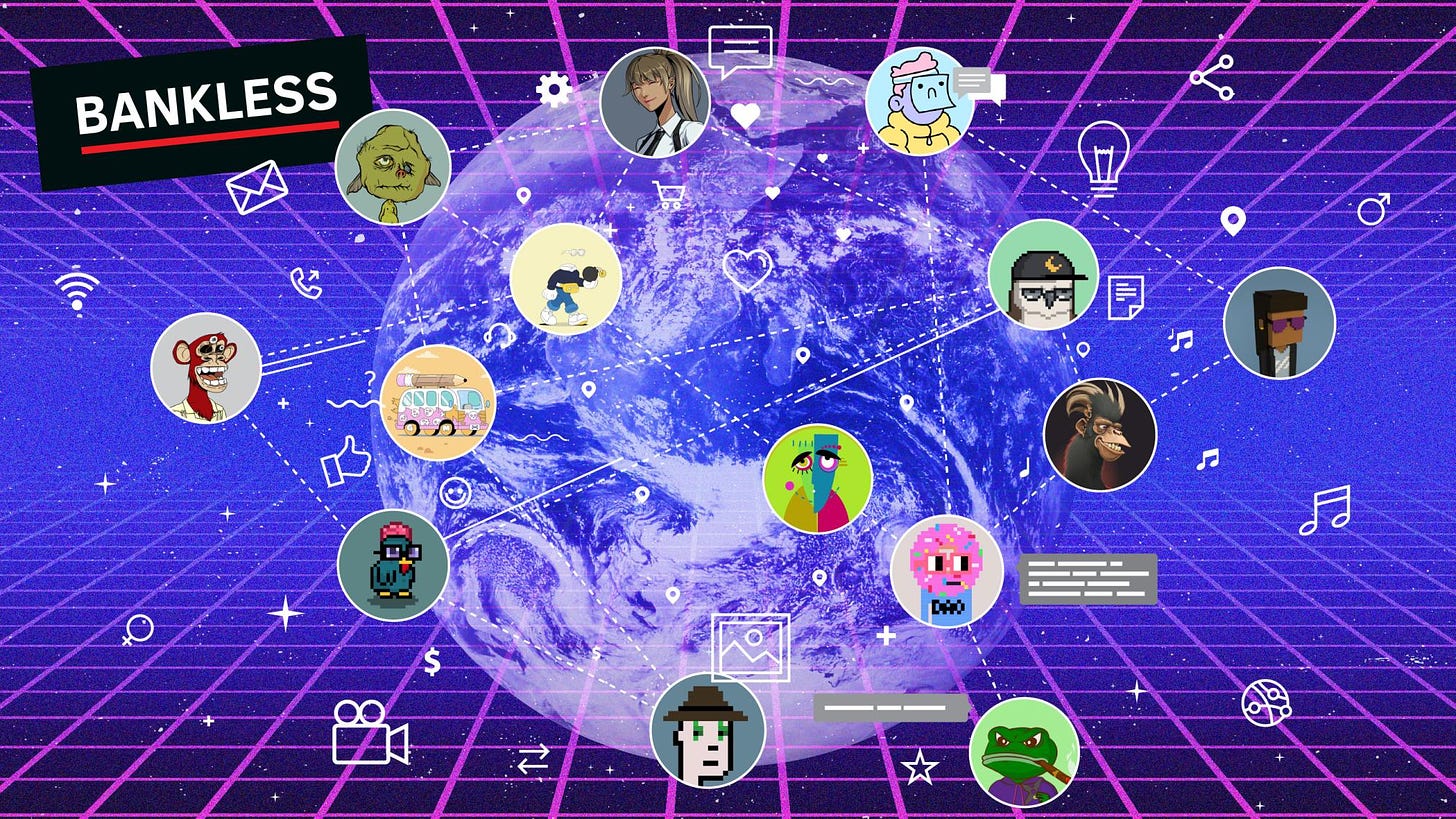
As you know — a couple of months ago, Elon Musk bought Twitter. The thing is — Twitter can be bought and sold because Twitter is a private company that’s product is a closed protocol.
It wasn’t always this way. In Twitter’s early days, its backend functioned as a kind of open protocol. It was an extensible social graph that allowed any developer to plug into its open API and build innovative third-party apps off of it. When Twitter closed off its APIs in 2018, this ecosystem broke down. Founder Jack Dorsey showed interest in re-embracing an open protocol with bluesky, but Musk hasn’t had much to say on the developing effort yet.
Web2 social media today clearly has no shortage of issues. Arbitrary censorship. No interoperability of social capital. Lack of innovation. Misuse of data. Opaque algorithms. Asymmetric power in monetization. The list goes on.
Decentralized alternatives to Big Tech platforms have been trying to address these problems for years. Their progress has been questionable. But thanks to improvements in blockchain technology, we’re starting to see a breakthrough in credible solutions being developed.
The first thing to know about decentralized social media is that efforts are around building protocols, not platforms.
Just as Elon Musk cannot buy the SMTP email protocol or the HTTP internet protocol and change its rules unilaterally, the goals surrounding web3 social protocols are to create decentralized, uncensorable, open protocols that let developers build customizable apps on top of them.
Some of the biggest players at work in this space right now are Lens, Farcaster, and DeSo. They take vastly different architectural routes, but they’re all headed toward that same goal.
Let’s take a closer look.
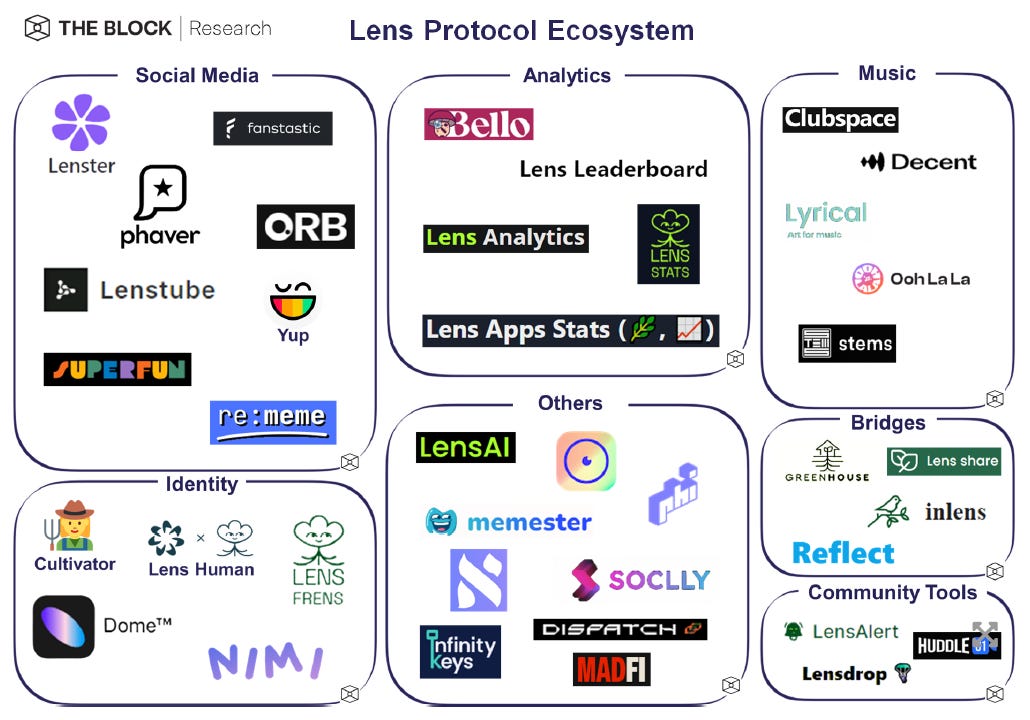
Lens is a decentralized social media protocol built on Polygon by the brain behind the DeFi giant Aave — Stani Kulechov. Launched in 2022 amid the mainstreaming of NFTs, Lens fully leverages the ERC-721 non-fungible token standard to build a truly decentralized ecosystem.
The use of NFTs pervades Lens Protocol. When you create a Lens profile, it is minted as an NFT in your Ethereum wallet. When you follow someone on Lenster, you mint a “Follower” NFT on-chain. And so on for any posts that you “collect”, make or share (called “mirroring”).
It’s a decentralized social graph that exists on the blockchain, empowering users with full ownership over their social identities. Let’s look at what that actually means in practice.
Consider Lenster, a Facebook-like app built on Lens Protocol. I have a grand total of 15 followers on Lenster. This means that 15 awesome people on Lenster have chosen to click “follow” on my Lenster profile and mint a follower NFT.

Now suppose Lenster decides to ban me because I flouted their content moderation rules, similar to how MetaMask or Uniswap could filter scam tokens from their frontend. If this ban occurred, I wouldn’t actually lose my 15 loyal followers for the simple reason that my social graph does not exist in the Lenster app, but on the underlying Lens Protocol database in Polygon’s immutable smart contracts. They exist in the form of NFTs, which makes them fully interoperable.
So when I jump to another app on Lens Protocol like the Twitter-like app Phaver – my social clout is still intact. As long as other Lens apps interpret their follower count metrics by mirroring the number of Follow NFTs minted, it should look the same.
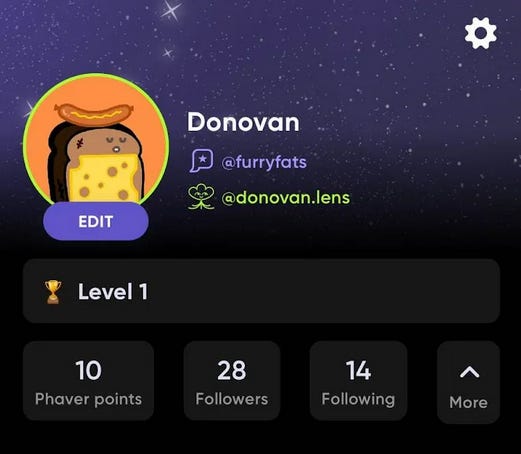
The same is true for content, say, a video on LensTube, a YouTube-like app on Lens Protocol. The Bankless YouTube channel was accidentally removed from YouTube earlier this year. We panicked for a weekend.
But if LensTube delists my video, that’s a minor inconvenience. The video still exists on Lens Protocol’s database, and is therefore available for viewing across Lenster, Phaver or any other app that is designed to pull the video’s data. Lens apps are merely frontend apps, not dapps!
Lens’ magic lies in the innovation at the developer and user experience layer.
Consider the inflexibility with YouTube today. Creators have no choice but to use YouTube Studio to manage their monetization, analytics or arrange their playlists. Meanwhile, YouTube viewers are forced into one method of consumption.
Lens solves this by unbundling the tools of creation and tools of consumption. This enables devs to build apps by plugging and playing a myriad of Web3 and Web2 tools, or on-chain and off-chain data, all tied together by the LensAPI.
An app that needs digital identity is free to choose between POAPs, ENS, or Proof of Humanity. To host images, apps can opt for decentralized options like IPFS and Arweave, or traditional options like AWS. Social media apps can pick XMTP or Dialect for direct messaging and Push or Notifi for notifications. For DeFi functionalities, apps can plug into any DeFi dapp.
On the other side of the coin, users are free to consume videos on any consumption platform of their choice. If a Bankless video is uploaded on Lens, you’re free to watch it on any app that supports the protocol. Both devs and users are able to customize their building/user experience without being siloed.
In short, create any way you want, consume any way you want — it’s innovation at the creator and user experience layers. The backbone of Lens apps is a complex mixture of data generated within Lens Protocol, on the blockchain and off-chain data to render a unified Lens experience.
Len’s current centralization risk lies in its multisig governance. As of December 2022, Lens has a total of ~98K total users with ~35K monthly active users. A total of 7.9 million relay transactions have been processed through Lens’ gasless API relay since June, making it ~4% of all Polygon’s transactions. 
Social media networks generate a lot of data. For a web3 protocol trying to be “fully decentralized”, storing every post, share and favorite on-chain is expensive, cumbersome and a major challenge to scale. Maybe including all of that is overkill. Maybe all we need on-chain are the most essential primitives, like one’s identity, and the ability to read and write data.
That in a nutshell, is the Farcaster approach. Farcaster’s main differentiation from Lens is its minimalistic approach of storing data on-chain, what its ex-Coinbase founders Dan Romero and Varun Srinivasan term “sufficient decentralization”.
Farcaster is a permissionless protocol, where data and APIs are proprietary. This means any developer can query data from Farcaster and build different, customized clients (apps) atop the Farcaster data layer, the same way Gmail or Apple Mail or Outlook build on the SMTP email protocol.
Creating a profile on Farcaster generates a seed phrase and an identity on the Ethereum Goerli testnet, where Farcaster has chosen to host user identities i.e., its global data registry. Everything else in the social graph goes off-chain on centralized servers known as Hubs. Farcaster users only pay a gas fee once to create a profile, unlike its competitors Lens or DeSo where all actions incur a gas fee and require a signature.
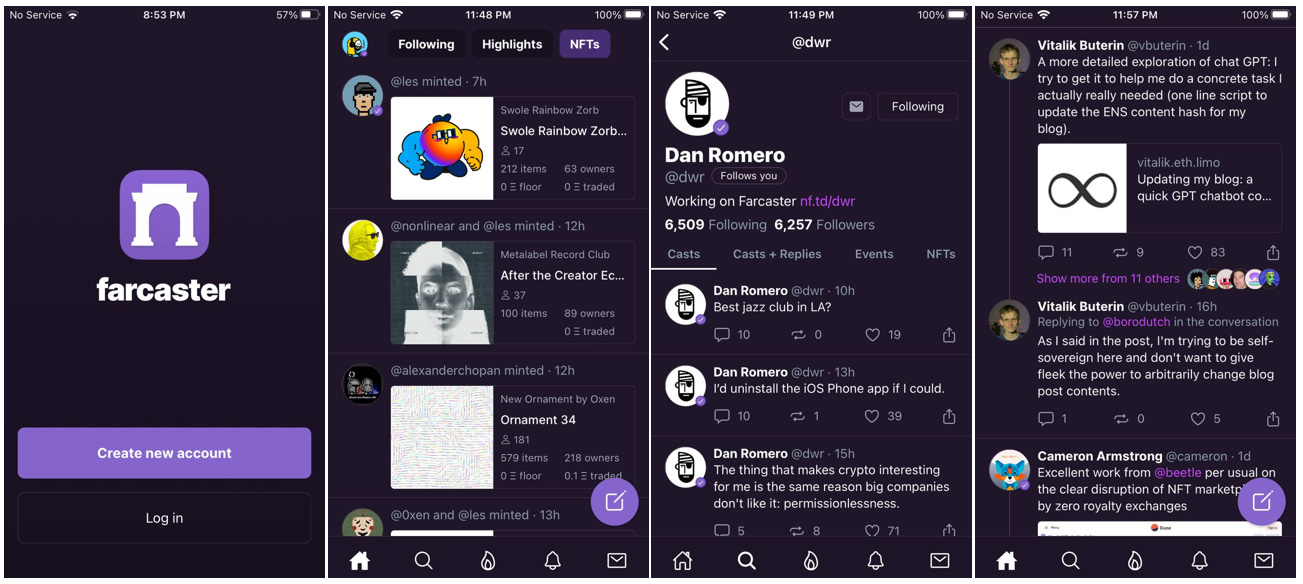
At present, there are already at least 30 apps built on the Farcaster protocol — from analytical and event management tools to social media networks.
Farcaster eschews the typical financialized incentive layer of web3 today where node validators are rewarded in tokens for performing a task. Instead, a peer-to-peer network of Hubs form the data layer of Farcaster, similar to an Ethereum node that stores data, validates actions, and propagates data to peer nodes.
The “decentralization” of Farcaster depends on the permissionless nature of anyone being able to create a Hub and run it honestly. Incentives to run honest Hubs work similarly to how traditional institutions today run email servers or websites. Farcaster is betting that hosted clients will run their own Hub honestly in order to most efficiently serve its users.
Content moderation is also done on the client layer. Just like the responsibility to moderate content on Lens lies with app developers, Farcaster developers at the client layer will similarly make subjective decisions to govern content.
Farcaster’s centralization risks today lie in the fact that these Hubs are still not open source. The team plans to open source Farcaster Hubs data and APIs by January 2023 and migrate to the Ethereum mainnet by February.
As of December 2022, Farcaster has a total of 6.7K users and averages 3.5K monthly active users. For more on Farcaster, see their official docs here and here.
If Farcaster is taking a minimalist approach, then DeSo (short for Decentralized Social) goes in the entirely opposite direction of maximalism. DeSo is an L1 blockchain custom-built specifically for decentralized social applications.
Why an entire new L1?
Unlike Lens, DeSo (formally known as BitClout) launched 2019 in the post-ICO era before NFTs were a thing. DeSo was built from the ground up to be a storage-heavy “infinite state” blockchain, in contrast to the general-purpose L1s of today that are designed to be “finite state” and store only account balances. This design lets DeSo store all raw data on-chain inexpensively, to be indexed and queried quickly like Google’s search engine.
By building directly on the infrastructure, this gives DeSo full control over their strategy to scale.
DeSo is similar to Lens in one important respect: every action is an on-chain transaction that costs gas. Some Lens apps try to circumvent this in the short-term by paying for user’s apps through its “dispatcher” gasless relay API. DeSo on the other hand doesn’t bother because most transactions are almost costless – less than $0.00002 – a testament to DeSo’s infrastructural design.
Thanks to its almost-costless transactions, DeSo apps are open to experiment with a kind of on-chain hyper-financialization that’s unburdened by having to pay transactions constantly. Let’s look at Diamond, DeSo’s most popular Twitter-like app.
Instagram influencers cannot monetize their followings directly, and have to resort to informal avenues like sponsorship deals to monetize their following. On Diamond, it’s more straightforward. Users can tip each other by buying another user’s unique “creater coin” with DESO. A creator coin is essentially a kind of tokenized social clout that has interoperable utility with many of DeSo’s other apps. The more people buy your creator coin (with DESO), the more valuable it becomes, and vice versa.
What are DeSo’s centralization risks? The same as any L1: economic security. If the DESO token price plummets, the chain is more vulnerable to attack. Thankfully, token distribution of DESO is fairly distributed. The sale of DESO tokens were done through an ICO rather than fundraising through VCs: the top owners of DESO tokens own no more than 3.12% of the total DESO supply as of December 2022.
The DeSo chain is also currently on proof-of-work consensus with at least 1K miners, with plans to shift to proof-of-stake by January 2023.
DeSo boasts a higher monthly active user count than all of its competitors at ~130K as of October 2022. There are currently more than 50 apps building on DeSo, with its most active the Twitter-like app Diamond.
There are too many more decentralized social media protocols that I cannot do justice to in detail in this short article. Nevertheless, here are some of the other players in this space.
Cyberconnect is a social media protocol deployed on Ethereum, BNB Chain and Polygon. Its protocol design is highly similar to Lens in that it leverages the ERC-721 NFT token format to represent social graph data. Where it departs slightly is in its underlying modules. Lens modules for instance are fairly social media-oriented (follow, collect, reference), whereas Cyberconnect’s modules employ a more open-ended design that lets developers customize tokens in a variety of ways e.g. an NFT, soulbound token, verifiable credential, etc.
Cyberconnect is currently governed through a multisig. According to Dappradar, Cyberconnect has a total of 17.5K monthly active users with 30+ apps built on its protocol.
Twitter’s drama in the past year has driven an exodus of users to alternative Twitters. One such example is Mastodon, a social network launched in 2016 based on the open source ActivityPub protocol. Anyone can build third-party apps off the open source Mastodon protocol.
Mastodon’s architecture bears the strongest resemblance to the federated model of Farcaster, where thousands of privately-operated and crowdfunded servers known as “instances” host data and choose to communicate with other instances (or not) or stay fully private. Users must choose an instance to join, similar to Discord or Reddit. Because Mastodon instances make subjective decisions on what content is visible to another instance, the Mastodon user experience tends to be fragmented rather than a public townhall like traditional social media platforms.
Where Mastodon differs from Farcaster is that the latter hosts user identity on an immutable smart contract on Ethereum whereas Mastodon user accounts can be unilaterally censored or banned by operators of any instance.
According to its CEO Eugen Rochko, Mastodon boasts an impressive 1.02M monthly active users as of November 2022.
DSCVR (discover) is a Reddit-like social app built on the Social Fabric protocol that exists on the Internet Computer L1 blockchain. DSCVR’s special sauce is similar to DeSo in that all data is stored on-chain. This is enabled by Internet Computer’s underlying Wasm technology that is optimized for cheap storage and provides full HTTP access to the L1’s smart contracts.
At present, there are ~163K users with 10-12K daily active users across Social Fabric.
One common question that emerges in decentralized social media discussions is “Which one will win?”
I think the correct answer is: none of them. Big Tech platforms acquired dominant market share primarily because they used permissioned technology that induced walled gardens. These walled gardens bred a network effect that ran on positive feedback loops, making natural economic sense for users to gravitate towards one platform in an all-or-nothing game, and subsequently making it costly for users to exit.
The technological core of Web3 social media protocols on the other hand are made of permissionless blockchains with a lower cost of exit (while preserving positive feedback loops), thereby making it harder for network effects to accumulate.
That is a good thing, because it’s freedom of consumer choice. And that’s really the whole point of crypto after all.
Donovan Choy is a Bankless editor, and co-author of Liberalism Unveiled. You can follow him on Twitter here.
Subscribe to Bankless. $22 per mo. Includes archive access, Inner Circle & Badge.

Not financial or tax advice. This newsletter is strictly educational and is not investment advice or a solicitation to buy or sell any assets or to make any financial decisions. This newsletter is not tax advice. Talk to your accountant. Do your own research.
Disclosure. From time-to-time I may add links in this newsletter to products I use. I may receive commission if you make a purchase through one of these links. Additionally, the Bankless writers hold crypto assets. See our investment disclosures here.

